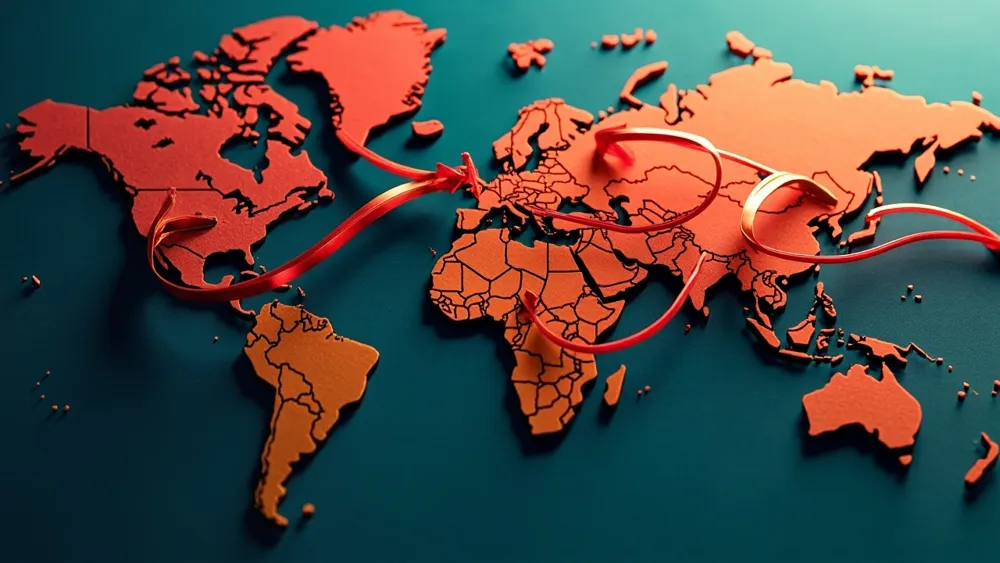Chancay Boosts China-Peru Connectivity and Partnership Prospects

On June 5, the Chancay Port in Peru officially commenced commercial operations, marking a significant milestone not only in the framework of China-Peru cooperation but also within the broader context of the Belt and Road Initiative in Latin America.
Developed through a partnership between China COSCO Shipping Co and local Peruvian stakeholders, Chancay Port represents the first large-scale deep-water and smart port established by a Chinese company in South America. The port's opening is anticipated to revolutionize regional logistics, significantly cut shipping times between Asia and the West Coast of South America by up to 12 days, and provide substantial economic benefits, aiding Peru's long-term growth.
The project enjoys support from both the Chinese and Peruvian governments, fostering a rule-based business environment conducive to managing market competition and regulatory challenges. Pan Deng, director of the Latin American and Caribbean Region Law Centre at the China University of Political Science and Law, emphasized that the port's transition to full commercial operation illustrates both deep political trust and the aim for solid commercial outcomes.
Roberto Sánchez Palomino, a Peruvian congressman and head of the Special Commission for the Chancay Megaport, remarked that the port's evolution into a logistics hub aligns with a growing consensus among Global South nations for enhanced cooperation in infrastructure, green energy, and technological advancement.
Chancay Port, strategically located about 80 kilometers north of Lima, comes with an investment of $3.6 billion as a flagship project under the Belt and Road Initiative. Its infrastructure features a multipurpose terminal, an underground tunnel system connecting the port to a logistics center, and advanced systems designed to accommodate large container vessels.
According to Sánchez, the port's activation poses an extraordinary opportunity for Peru. He noted that between November and April, approximately 50,000 tons of cargo could be processed at Chancay within just six months, and if such momentum continues, the port could contribute around 1.5 percent to Peru's GDP.
Beyond being merely an infrastructure project, Sánchez indicated that Chancay is a catalyst for unlocking Peru's potential in sectors such as green energy, high-value processing, and digital innovation. He pointed out that Peru possesses abundant resources extending beyond mining, including tourism and agriculture.
Chancay Port exemplifies how China and Latin American nations are fostering constructive, inclusive, and forward-looking partnerships. Over the past three decades, the trade dynamics in Peru have shifted extensively, with China emerging as its largest trading partner, a change driven by investment, collaboration, and mutual benefits.
As the global economy faces increasing fragmentation, projects like Chancay present a counter-narrative that advocates for openness, sustainability, and shared prosperity rather than retreating into protectionism. Sánchez articulated that cooperation among Global South nations has transformed from a matter of choice to a critical necessity.
From January to May 2025, Ningbo Zhoushan Port, which is linked to Chancay, reported handling over 800,000 twenty-foot equivalent units in trade with South America, reflecting a year-on-year growth of more than 40 percent. By the end of 2024, 22 countries in Latin America will have entered into cooperation agreements under the Belt and Road Initiative with China.
Overall, the Chancay Port project not only promises to raise Peru's profile as a logistics hub on the global stage, but it also signals a shift in trading relationships, emphasizing the significance of dignified, reciprocal partnerships aimed at sustainable development across the Global South.
Read These Next

Strategic Innovations and Financial Performance: A Comprehensive Analysis of 顺丰控股
Analysis of 顺丰控股's recent strategic and financial developments, focusing on performance, trends, risks, and future outlook.

CFPB Investigation: Regulatory Changes and Consumer Protection Issues
The ongoing investigation by the Federal Reserve's inspector general into the Trump administration's efforts to dismantle the CFPB brings to light critical discussions surrounding regulatory shifts in the financial sector, emphasizing the importance of consumer protection and the potential implications for various stakeholders.

Oracle shares surge 13% to record high on earnings beat, fueled by cloud optimism
Oracle shares surged after a strong earnings report fueled optimism in the tech sector, particularly in cloud services, leading analysts to raise price targets.
